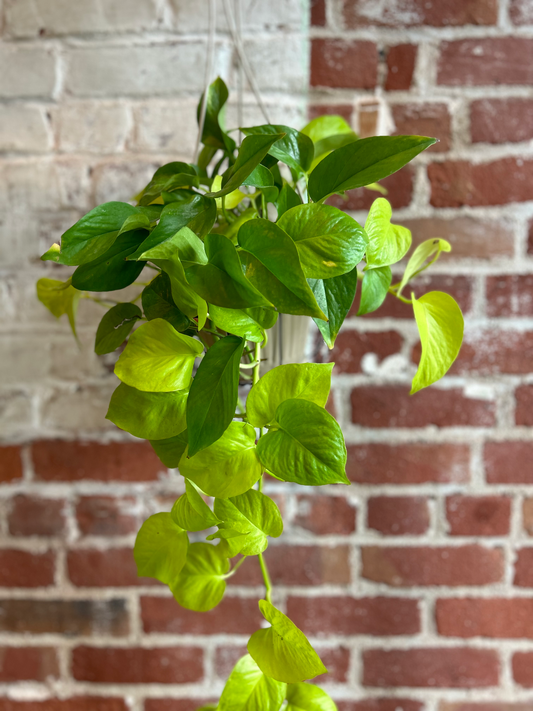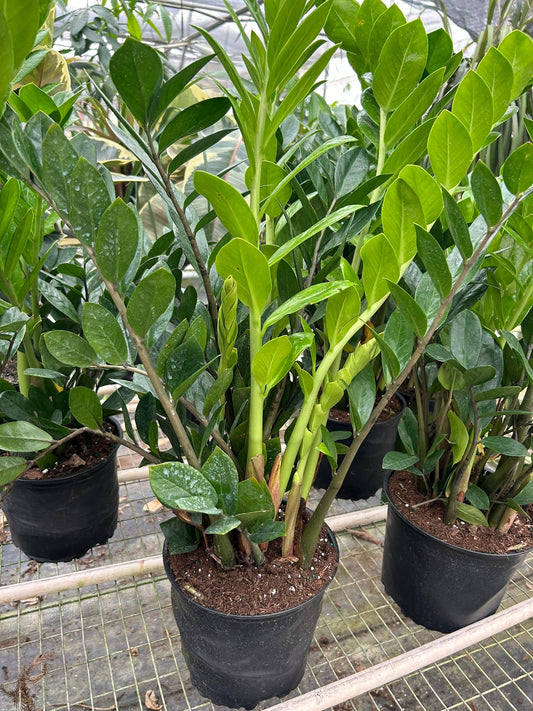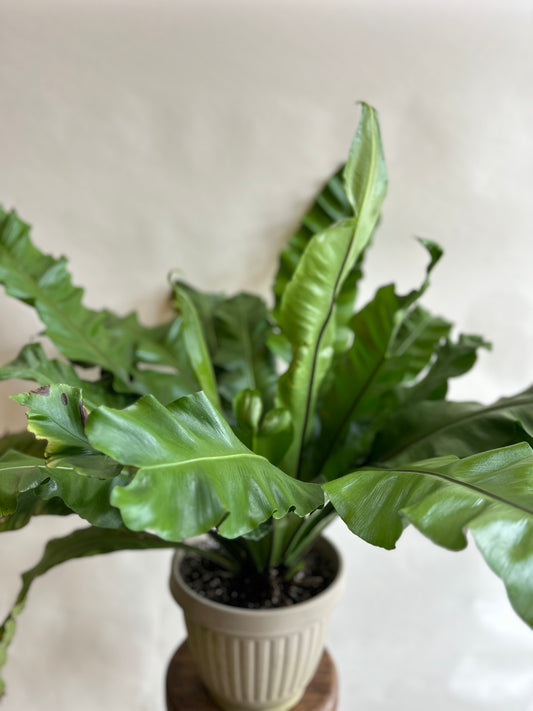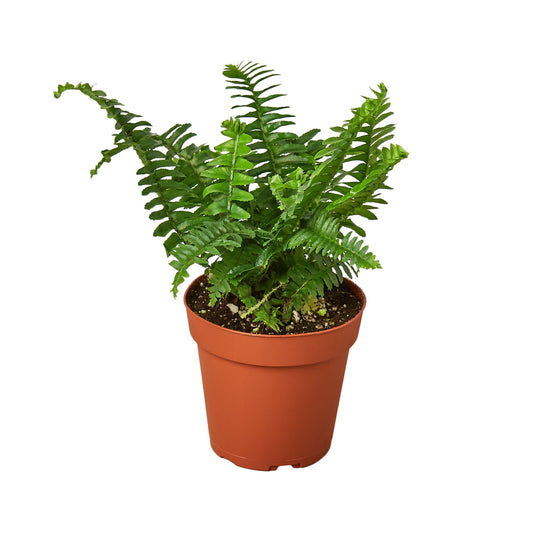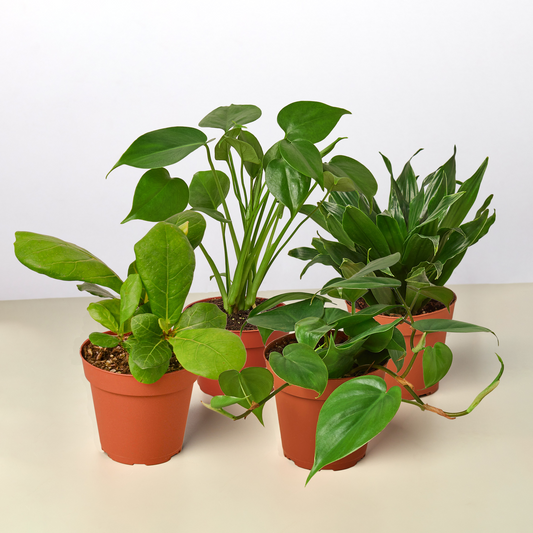What is the Best Soil Type for Prayer Plants?
Cafe Planta Team
Prayer plants, with their striking leaves and fascinating nightly movements, have captured the hearts of many plant lovers. Their foliage often sports bold patterns and vibrant colors, making them a favorite choice for adding a touch of nature indoors. But while they’re quite a sight to behold, getting their care just right can be a bit of a puzzle, especially when it comes to choosing the right soil.
In this article, we’ll walk through what makes the best soil for prayer plants and how you can create the perfect mix to keep your leafy friends thriving. From understanding their natural habitat to learning how to whip up a homemade soil blend, we’ve got you covered. So, let’s dig in and get our hands a little dirty!
Understanding the Natural Habitat of Prayer Plants
Before we get into the nitty-gritty of soil composition, it’s helpful to take a step back and consider where these plants come from. Prayer plants, like many other members of the Marantaceae family, originate from the tropical rainforests of Central and South America. Picture dense, humid jungles where the soil is rich, loose, and teeming with life.
Their native environment is constantly warm, with regular rainfall and a canopy of trees filtering light. The soil is typically rich in organic matter but drains well, allowing excess water to pass through quickly. This natural setup gives us valuable clues about what kind of environment prayer plants prefer.
Knowing where they come from helps us mimic these conditions at home, ensuring that our plants thrive. This means providing a balance of moisture and drainage in the soil, along with maintaining a humid, warm environment. So, how do we achieve this with a pot on our windowsill? Let’s take a closer look at the soil components that will make your prayer plant feel right at home.
Essential Soil Components for Prayer Plants
Creating the perfect soil mix for a prayer plant isn’t rocket science, but it does require a bit of thought. The components you choose will affect how well your plant grows and how often you’ll need to water it. Here are some elements you’ll want to include in your soil mix:
- Peat moss or coco coir: These materials help retain moisture while remaining light and airy, which is essential for root health.
- Perlite: This volcanic glass improves drainage and aeration. It’s crucial for preventing water from sitting in the soil, which can lead to root rot.
- Bark or coarse sand: Adding these elements enhances drainage and mimics the forest floor’s texture, allowing roots to spread easily.
- Compost or well-rotted manure: A bit of organic matter provides nutrients and helps maintain a healthy soil ecosystem.
These components come together to create a soil mix that is both moisture-retentive and well-draining. It’s all about balance—enough water retention to keep roots hydrated without causing them to sit in soggy soil.
Creating Your Own DIY Soil Mix
Ready to get hands-on? Mixing your own soil can be a fun and rewarding process, giving you full control over what goes into your prayer plant’s pot. Here’s a simple recipe to get you started:
- Start with a base of two parts peat moss or coco coir. This will provide the moisture retention needed for your plant.
- Add one part perlite to ensure proper drainage and aeration. This will help prevent root rot by allowing excess water to escape.
- Mix in one part bark or coarse sand to mimic the natural forest floor texture and further enhance drainage.
- Finally, incorporate a small amount of compost or well-rotted manure for nutrient content.
Combine these ingredients in a container and mix thoroughly before potting your plant. Adjust the proportions as needed until you find the perfect blend for your home’s conditions. Remember, you’re aiming for a soil that feels light and breathable yet holds moisture well.
Choosing Store-Bought Soil Alternatives
While making your own soil mix is ideal, sometimes convenience is key. Fortunately, there are many commercial potting soils that can work well for prayer plants with a few tweaks. Here are some tips for choosing and modifying store-bought options:
- Look for a high-quality potting mix: A good potting mix will contain a blend of peat moss, perlite, and compost. Avoid heavy garden soil, which is too dense for indoor plants.
- Consider adding perlite or sand: If your chosen mix lacks drainage, add extra perlite or sand to improve aeration and water flow.
- Avoid moisture-retentive mixes: Some potting soils are designed to hold onto water for longer periods, which isn’t ideal for prayer plants.
By carefully selecting and modifying a store-bought soil, you can still provide a suitable home for your prayer plant without the hassle of sourcing individual components.
Understanding Watering Needs
Now that you’ve got the soil sorted, it’s time to think about watering. Prayer plants prefer consistently moist soil, but there’s a fine line between enough and too much. Overwatering is one of the most common mistakes plant parents make, leading to root rot and unhappy plants.
Here’s how you can strike the right balance:
- Use your finger to test soil moisture: Stick a finger about an inch into the soil. If it feels dry at this depth, it’s time to water.
- Water thoroughly but less frequently: When you do water, make sure it’s enough to moisten the entire root ball. Allow excess water to drain away.
- Adjust based on your environment: Factors like temperature and humidity will affect how quickly your soil dries out, so adapt your watering schedule accordingly.
By keeping an eye on your plant’s soil and adjusting your watering routine as needed, you’ll help your prayer plant stay healthy and vibrant.
The Role of Humidity
Prayer plants are humidity-loving beauties, and keeping the air around them sufficiently moist is just as important as the right soil. In their natural habitat, humidity levels are high, often above 60%, which is quite different from the average home environment.
Here are some easy ways to boost humidity for your prayer plants:
- Use a humidity tray: Place a shallow tray filled with pebbles and water under your plant’s pot. As the water evaporates, it increases the humidity around the plant.
- Mist regularly: Light misting with water can help temporarily increase humidity, although it should not replace other methods.
- Group plants together: Plants naturally release moisture into the air, so clustering them can create a more humid microenvironment.
- Invest in a humidifier: For a more permanent solution, a small humidifier can maintain optimal humidity levels in your plant’s space.
Keeping the air moist will not only benefit your prayer plant but can also improve the health and appearance of your other tropical houseplants.
Signs Your Prayer Plant Needs a Soil Change
Even with the best soil mix, there may come a time when your plant needs a change. Here are some signs that your prayer plant’s soil might need a refresh:
- Water isn’t draining properly: If water pools on the surface or takes too long to drain, your soil might be compacted.
- Roots are visible on the surface or through the drainage holes: This indicates that your plant might be root-bound and in need of repotting.
- Soil smells musty or sour: This can be a sign of poor drainage or overwatering, leading to root rot or fungal issues.
- Yellowing leaves or stunted growth: These symptoms can be caused by nutrient deficiencies, often remedied by fresh soil.
If you notice any of these signs, consider repotting your prayer plant with fresh soil to give it a new lease on life.
Repotting Your Prayer Plant
Repotting can seem daunting, but it’s an opportunity to give your prayer plant the fresh start it needs. Here’s a step-by-step guide to repotting:
- Choose a pot that’s about 1-2 inches larger in diameter than the current one. Make sure it has drainage holes.
- Carefully remove your prayer plant from its pot, gently loosening compacted roots.
- Fill the new pot with a base layer of your prepared soil mix.
- Place the plant in the new pot, filling in around the roots with additional soil. Press lightly to stabilize the plant.
- Water thoroughly to settle the soil and help the plant adjust to its new home.
Repotting not only refreshes the soil but also gives you a chance to check for any root issues and prune away dead or damaged roots.
Fertilizing Your Prayer Plant
Once your prayer plant is snug in its new soil, it may benefit from a little extra nourishment. Fertilizing can help support healthy growth, but it’s important to do it right. Here’s what you need to know:
- Choose a balanced, water-soluble fertilizer: A well-rounded formula will provide the necessary nutrients without overwhelming your plant.
- Follow a regular feeding schedule: During the growing season (spring and summer), fertilize every 4-6 weeks. Cut back in the fall and winter.
- Don’t overdo it: Too much fertilizer can lead to salt buildup in the soil, causing root burn and other issues.
- Flush the soil occasionally: Rinse the pot with water to remove excess salts and prevent nutrient imbalances.
By providing the right nutrients at the right times, you’ll encourage lush, vibrant growth and keep your prayer plant looking its best.
Final Thoughts
Choosing the right soil for your prayer plant is essential to keeping it happy and healthy. From understanding its natural habitat to creating a balanced mix of moisture-retentive and well-draining components, every step contributes to a thriving plant. Remember to adjust your watering and humidity practices, and keep an eye out for signs that your plant might need a change.
We at Cafe Planta are here to support your plant journey. Whether you're looking for the perfect soil mix, a new plant to add to your collection, or plant-themed apparel, we’ve got you covered. If you have any questions or just want to chat about plants, feel free to email us or drop us a message on Instagram. Let's grow together!


